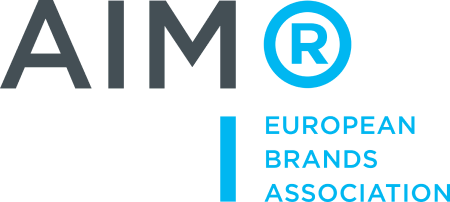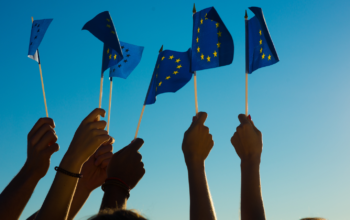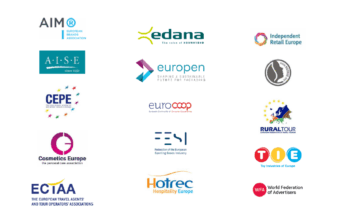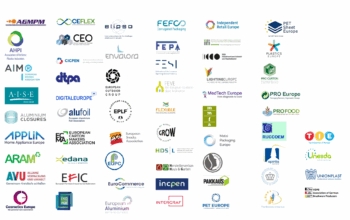Sustainability

Supporting brands in meeting important social and environmental goals
AIM members have an important role to play in meeting today’s environmental and social challenges. Consumers are increasingly aware of the need for more sustainable practices, and brands’ responsibility in this area.
Many AIM brands are investing in initiatives that go beyond regulatory requirements and consumer expectations, to improve their impact on the environment and local communities. We support them in finding new and practical ways to make a positive impact on people and planet.

Activities
We are working to reduce waste and pollution, in close alignment with broader EU and global goals.
AIM brands fully support the objectives of the EU’s Green Deal and the new Circular Economy Action Plan to mobilise industry towards a clean, circular and climate-neutral economy. Many of our members are integrating circular thinking into their business strategies through sustainable product and packaging design, optimised resource use and efficient waste management and recycling, efficient production processes, responsible sourcing practices (AIM-Progress) and consumer involvement (Brands Nudging for Good). These improvements are well underway, but more needs to be done.
For consumers to play their part in the circular economy, they need clear and accurate information about the products they are buying – such as how they should best be used, disposed of or recycled. AIM’s Manifesto ‘No Data, No Claim’ supports efforts to make this information easy for consumers to understand, and to substantiate green claims based on robust, commonly recognised and science-based methodologies.
To achieve the EU’s recycling targets, recycling rates in the EU must increase. Alongside industry’s efforts to establish a better and more efficient collection, sorting and recycling infrastructure, it is essential to engage consumers by providing them with consistent, harmonised information on how to dispose of their waste correctly. This is challenging, given the various waste management systems used across the EU and distinct national labelling requirements.
To address this, AIM has developed a concrete position calling for an EU-harmonised labelling system relying on text-free, clearly understandable pictograms for providing consumers with sorting instructions. We suggest manufacturers use an on-pack pictogram to match the one put on waste bins by the waste management operators, and digital tools like QR codes to give consumers easy access to information on sorting waste. This would require consumers to simply pair the symbol on the packaging with the symbol on their bin. Find out more in our short video.
The 2030 Agenda for Sustainable Development provides a shared blueprint for peace and prosperity for people and the planet, now and into the future.
It is based on the Sustainable Development Goals (SDGs), which AIM member brands are working to support. To deliver on their commitments, our members follow the AIM Principles on Sustainable Development.
They focus on:
- Innovating to develop and market goods and services that have a more sustainable life cycle.
- Optimising the economic and environmental efficiency as well as the social impact of products and activities in their supply chain.
- Communicating their sustainability efforts based on proven science and in line with EU policy on advertising and claims.
Eco-design for packaging aims to minimise the environmental impact of the product and its packaging over the entire life cycle. AIM’s Eco-Design Model for brands looks at four important elements:
- Packaging: innovations in packaging design, reducing/substituting material and the overall weight of packaging, increasing recyclability and recycling, integrating more recycled content in packaging, etc.
- Supply chain: advancing human rights in supply chains through responsible sourcing (see more at AIM-Progress)
Engaging consumers in sustainability: sustainability information, behavioural nudging (find out more through AIM’s Nudging for Good initiative) - Production processes: sustainable production, reducing greenhouse gas submissions, transferring to renewable energy, etc.
AIM brands have been researching and developing ingenious packaging solutions where eco-design is championed and material and resource use is minimised. Their solutions reduce the weight and volume of the packaging – helping to meet European objectives – while preserving its key functionalities.
The presentation of the product is one of the packaging’s main functionalities, as recognised also by the proposed Packaging and Packaging Waste Regulation (PPWR), and appreciated by consumers and businesses alike.
AIM brands therefore emphasise support for entrepreneurship, creative abilities and IP rights, which are all crucial enablers of diversity in design in the PPWR and its implementation. We recommend a balanced approach to minimisation requirements, taking into account both sustainability targets and other key EU objectives.
The Circular Plastics Alliance, initiated by the European Commission, brings together stakeholders from the plastics value chain to achieve the target of 10 million tons of recycled plastics in new products on the EU market by 2025, as set out in the European Strategy for Plastics.
AIM has joined the Circular Plastics Alliance as part of continued efforts to tackle the urgent problem of plastic pollution. Brands are determined to work with actors across the value chain to reduce plastic use, increase the recyclability and recycling of their packaging, and integrate more recycled content into their products.
AIM brands are committed to more sustainable production practices. They are reducing greenhouse gas emissions, transferring to renewable energy, decreasing their water use, promoting zero waste to landfill and eliminating waste.







